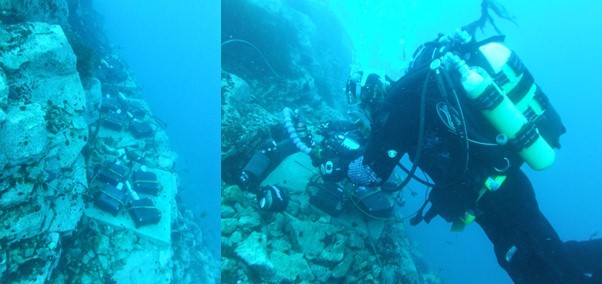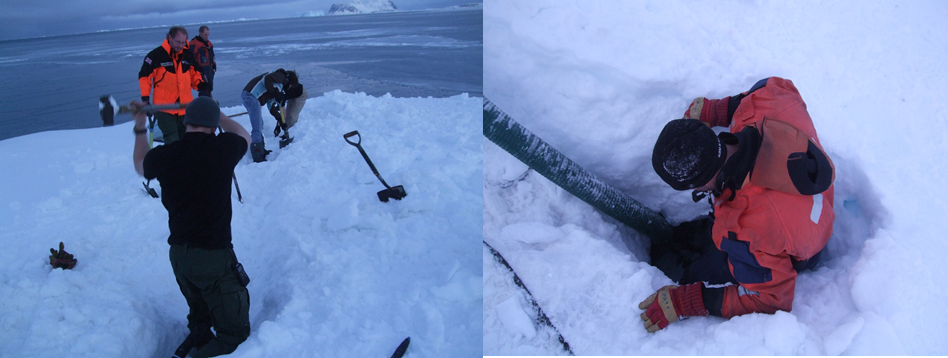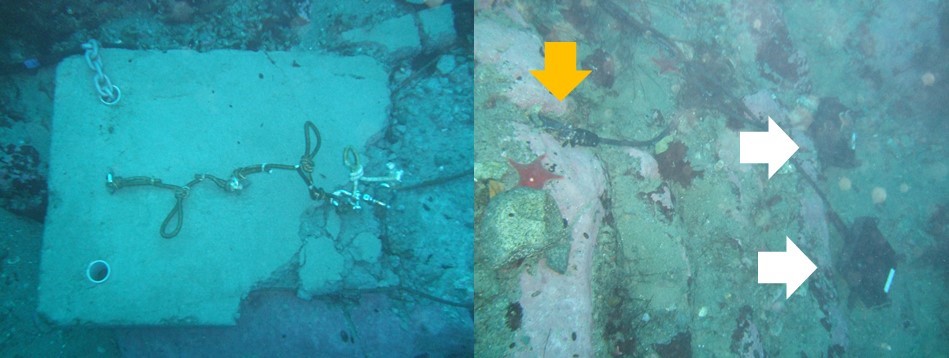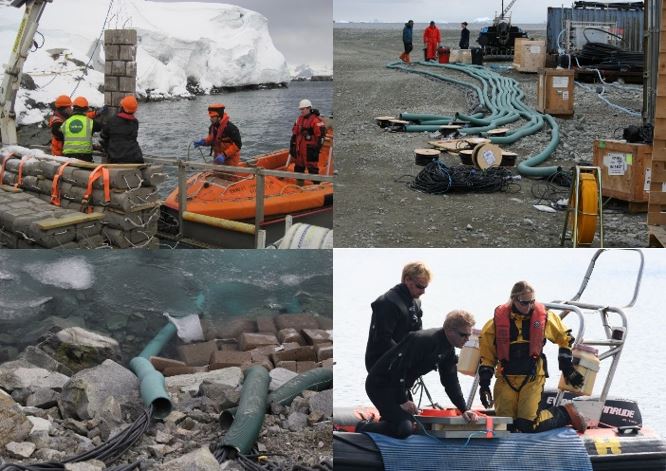Warming up the Antarctic: Harder than you think
29 July, 2019 Rothera
Professor Melody Clark, Project Leader, discusses the trials and tribulations of undertaking research in Antarctica. Her latest paper published in Nature Communications shows that rising sea temperatures of just 1-2 °C above ambient temperatures causes stress in small aquatic animals with far larger consequences for the ecosystem than previously anticipated.
This blog was originally produced for Nature Communications.
The publication of our paper in Nature Communications evaluating the performance of biofouling communities on heated settlement panels in the Antarctic after 18 months seriously underplays the huge amount of time and effort required to get this project to work.
It felt at times not that we were testing the resilience of calcified worms, but more the resilience and sanity of the researchers!
This lengthy timescale was essential as Antarctic marine invertebrates react very slowly to changing conditions and we were able to show that the animals were chronically affected by the long-term increase in temperature.
Creating the panels
This project first started in 2003, when physiologist Lloyd Peck worked with systems engineer Mark Preston from the British Antarctic Survey Antarctic Marine Engineering Department to develop the prototype panels.
The idea was to take standard settlement panels (squares of composite material that mimic natural rock surfaces and are used to study colonisation processes in the sea) and embed them above a heating element.
This would enable us to duplicate a warm layer of water up to 5mm thick above the panel to +1°C and +2°C above ambient water temperature, which match Intergovernmental Panel on Climate Change (IPCC) predictions for ocean warming by the end of the century.
These panels would provide an ideal ‘natural’ system for studying slow growing encrusting species, such as bryozoans and spirorbid worms, as they are fully exposed to all their normal environmental fluctuations (e.g. temperature, light, water chemistry and food supply) but slightly warmer.
It turn outs, this was the easy bit! What followed was several years of testing, design revision and a lot of work to build defences around the panels to stop them being smashed by icebergs in Antarctica.

Testing the panels
The first set of panels did not last long, as the original seals were not sufficient against the pressure and the panels exploded after several weeks at 15m depth.
The second set had a new design, were pressure tested, but then something happened with the cables!. Unfortunately, to work out what had gone wrong involved retrieving the panels in the middle of the Antarctic winter.

The third set of panels were hit by an iceberg (an occupational hazard when working in the Antarctic marine environment).

The final experiment took place in 2014-2016, headed up by postdoctoral researcher Gail Ashton. It involved a long summer of pulling cables through ducting, deploying concrete blocks to help protect the panels from iceberg impact and a lot of hard work. It also resulted in…success!
The rest is history as they say. Many thanks to everyone involved in this project over the years. Read the paper here.
